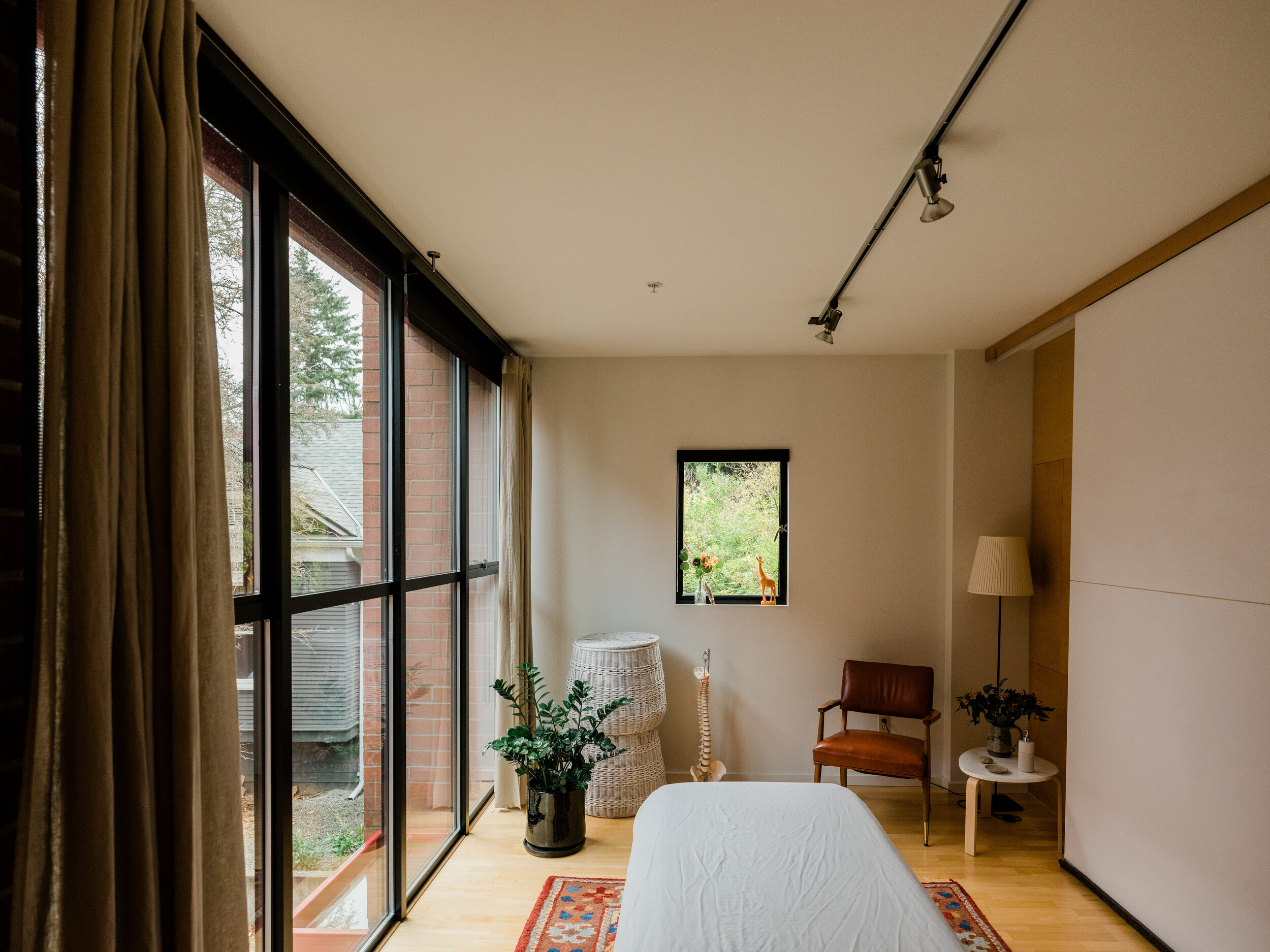
Frequently asked questions
-
Depending on the person asking the question, the answer can vary. People come to Structural Integration (SI) for all different reasons- recovery from surgery, help healing from an injury, to improve athletic performance or integration of the physical and emotional body. So what is it exactly? SI is patient, systematic and profound work that addresses the fascia – a living and constantly-evolving system which organizes our entire structure – so that we may feel the most ease in our body. Practitioners of SI do hands-on work to organize the fascia as well as movement exploration during which clients are actively engaged to help re-pattern our habitual and sometimes-limiting movements.
-
The creator of this work, Dr. Ida Rolf, began her exploration into fascia and the body in the 1940’s. As she honed her craft, she developed a system over many years, culminating in what we call the 10 series today. She began teaching her work in the 1960’s and called it Structural Integration. The students around her nicknamed it “Rolfing” and the name stuck. Since she began this work, there have been many Structural Integration schools that have developed her ideas and made them their own. SOMA, Hellerwork, Anatomy Trains SI, Functional Medicine to name just a few. All of us who practice this work share a common goal: to help bring the body to the most balance and ease through hands-on fascial work and education. Kate is honored to be in this clan of SI practitioners.
-
This is a question Structual Integration (SI) practitioners are asked almost every day of our lives. Many people have the misconception that SI is painful. So, here is the short answer: No! It does not have to be painful in order to be effective. The long answer: Structural Integrators can affect great change on a person’s system without causing any pain at all. The prevailing assumption that the work is painful comes from a time when it actually did hurt… a lot! Over the last few decades, Structural Integrators have made leaps and bounds in understanding how this work interacts with the nervous system. The work today offers a more sensitive and gentle approach. We now know that the most benefit comes from gentle, slow contact that is regulated by the client. Sometimes, there are areas in the body that feel sore when touched. In those areas, Kate works slowly, encourages deeper breaths and stays at just the right layer of connective tissue that is ready to change. Kate considers SI a conversation between her hands and the client’s nervous system. Never, at any point during the session, is she working in a way to cause pain. If your motto is “no pain no gain” then there is a chance you won’t connect with the kind of work Kate does.
-
Originally, the work was done with the client in underwear or a bathing suit. As times have changed, this outfit has changed. Kate encourages the client to wear something they are comfortable being seen in, standing, sitting or walking around in. This can be shorts and a loose tank top. Or underwear and a shirt.
The most important thing is that the clothes are not spandex tight (like tight running bras with lots of elastic- that's tough). It's easiest for Kate if she can contact the skin and move clothing around if an area is covered that she needs to get to.
-
Structural Integration (SI) practitioners work directly with the connective tissue, which holds the entire structure together from top to bottom, inside to outside. SI is a process that involves active participation from the client in order to repattern movements and postural habits that are causing us pain and discomfort. The intention is to systematically re-align the body so that it is free from these aches and pains in the long term. With the movement education during each session, clients are able to incorporate these changes into life outside of Kate’s office.
